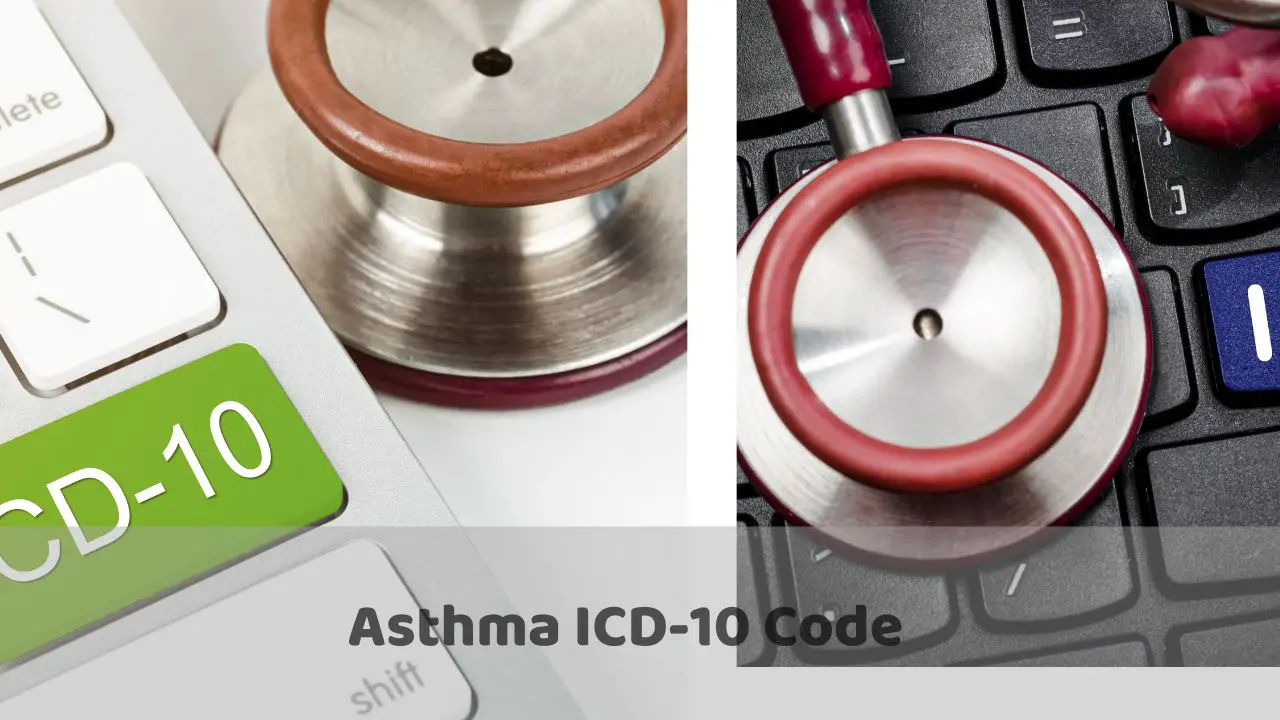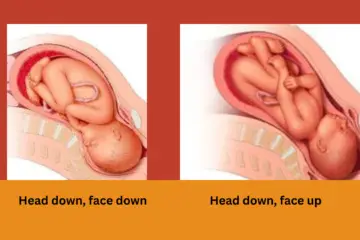Asthma is a widespread chronic respiratory condition that affects millions of people worldwide. Accurate diagnosis and classification of asthma are essential for effective patient care, research, and public health planning. In the realm of medical coding, the ICD-10 system plays a vital role in documenting and categorizing asthma cases. This blog post delves into the world of asthma ICD-10 codes, providing a comprehensive guide to understanding, using, and navigating this coding system. We’ll also explore the prevalence of asthma and the significance of precise coding in healthcare.
Understanding Asthma
Asthma is a complex and often unpredictable lung disease that leads to recurring episodes of breathlessness, chest tightness, coughing, and wheezing. Its impact on individuals and healthcare systems cannot be understated. According to the World Health Organization (WHO), an estimated 235 million people worldwide suffer from asthma, and it’s the most common chronic disease among
children.
Introduction to ICD-10
2.1: The Asthma ICD-10 Code System
The International Classification of Diseases, 10th Edition (ICD-10), is a standardized system used globally to classify and code diseases, conditions, and health-related issues. The ICD-10 codes are alphanumeric and serve as a common language for healthcare professionals to record and communicate health data effectively. The system’s extensive use ensures consistency in healthcare records and statistics, which is crucial for understanding and addressing public health challenges.
2.2: The Role of Asthma ICD-10 Code Diagnosis
ICD-10 coding is pivotal in accurately diagnosing and documenting asthma cases. Proper coding allows healthcare providers to classify the type and severity of asthma, contributing to personalized treatment plans.
The WHO reports that in some countries, less than 10% of people with asthma receive proper management. Accurate coding is essential in identifying these cases for improved care and resource allocation.
Section 3: Asthma ICD-10 Codes
3.1: Exploring Asthma ICD-10 Code
Asthma is coded under J45 in ICD-10, a chapter dedicated to “Diseases of the respiratory system.” Codes for asthma range from J45.0 to J45.9, representing various aspects of the condition, including its severity and underlying factors.
3.2: Severity Codes
A significant aspect of ICD-10 coding for asthma is the ability to classify its severity. Codes within the J45 range can specify mild, moderate, severe, or unspecified asthma, providing valuable insights for treatment and management.
ICD-10 provides a range of codes within the J45 category to indicate the severity of the condition, helping healthcare professionals classify and manage asthma more effectively. Here’s a brief overview of the key points that might be discussed in this section:
- Mild, Moderate, Severe, and Unspecified: ICD-10 offers codes that allow healthcare providers to specify whether a patient’s asthma is mild, moderate, severe, or unspecified. These severity codes help in characterizing the extent of the disease, which is vital for determining treatment strategies and assessing the impact on the patient’s daily life.
- Treatment Tailoring: The severity of asthma has a direct impact on the treatment plan. For example, mild asthma may be managed with less aggressive interventions, while severe asthma may require more intensive therapies, including biologic medications or advanced interventions like bronchial thermoplasty. Severity coding assists in customizing treatment approaches to match the needs of each patient.
- Quality of Life and Management: By coding for asthma severity, healthcare providers can better understand the patient’s overall health and quality of life. This information is crucial for monitoring the effectiveness of treatment and adjusting it as necessary.
- Resource Allocation: Severity coding is also valuable for healthcare institutions. It helps in resource allocation, as patients with more severe asthma may require more frequent visits, medications, or hospitalization. Accurate coding ensures that resources are allocated efficiently to meet the demands of asthma care.
- Epidemiological Research: Severity coding is essential for epidemiological research that seeks to understand the prevalence and impact of various asthma severities in different populations. This information is vital for public health planning and interventions.
In summary, the inclusion of severity codes in ICD-10 greatly enhances the precision of asthma classification and contributes to improved patient care, resource management, and public health efforts. It ensures that healthcare providers can address the specific needs of individuals with asthma, leading to better outcomes and a higher quality of life for those living with the condition.
3.3: Allergic and Non-Allergic Asthma
- Allergic Asthma: This type of asthma is triggered by exposure to allergens, such as pollen, pet dander, mold, or dust mites. ICD-10 codes can help healthcare providers specify whether a patient’s asthma is primarily allergic in nature, allowing for more targeted treatment and management strategies.
- Non-Allergic Asthma: Non-allergic asthma is typically not linked to specific allergens. It can be triggered by factors like smoke, pollution, respiratory infections, or exercise. ICD-10 coding distinguishes this type from allergic asthma, helping healthcare professionals understand the potential triggers and develop appropriate treatment plans.
By being able to code for these two distinct categories, healthcare providers can gain insights into the causes of asthma in individual patients and tailor their care to address the specific triggers and characteristics of the condition, ultimately improving patient outcomes and quality of life.
Section 4: Benefits of Accurate Asthma Coding
4.1: Resource Allocation
Accurate coding assists healthcare institutions in efficiently allocating resources for asthma management. Proper coding enables an estimation of the disease burden, aiding in planning for medications, equipment, and healthcare personnel.
4.2: Public Health Planning
Precise coding is crucial for public health planning and epidemiological research. It allows for the tracking of asthma prevalence, its risk factors, and the effectiveness of interventions.
4.3: Individualized Treatment
Accurate coding empowers healthcare providers to tailor treatment plans to the patient’s specific asthma type and severity, contributing to better outcomes.
Section 5: Challenges and Errors in Asthma Coding
5.1: Common Coding Errors
We explore the typical mistakes that can occur when healthcare professionals or coders use ICD-10 codes for asthma. It’s essential to highlight these errors to underscore the importance of accurate coding in healthcare. Here’s a brief overview of the key points that might be discussed in this section:
- Inaccurate Code Selection: One of the most common errors is choosing the wrong ICD-10 code. This can happen due to misunderstanding the code’s specific meaning or not properly documenting the patient’s condition. Selecting an incorrect code can result in inaccurate treatment and resource allocation.
- Incomplete Documentation: Proper documentation of the patient’s condition is vital for accurate coding. If clinical indicators and symptoms are not documented comprehensively, it can be challenging to select the right code. Incomplete documentation may lead to codes that do not reflect the true nature and severity of the patient’s asthma.
- Failure to Specify Triggers: Allergic and non-allergic asthma, as discussed in section 3.3, can have different ICD-10 codes. Failure to specify the triggers of asthma can result in incorrect coding, potentially leading to suboptimal treatment plans.
- Missing Comorbidities: Asthma often coexists with other health conditions, such as allergies or chronic obstructive pulmonary disease (COPD). Failing to account for these comorbidities in coding can hinder the overall understanding of the patient’s health status and may lead to inadequate care.
- Non-Specific Codes: Using non-specific codes like “unspecified asthma” (e.g., J45.9) when more specific information is available can limit the accuracy of patient records and hinder research and public health efforts.
- Incomplete Understanding: Some healthcare professionals and coders may not have a comprehensive understanding of the ICD-10 system or the nuances of asthma coding, which can result in errors.
- Coding Changes and Updates: ICD-10 codes are periodically updated to reflect changes in medical understanding and technology. Failing to stay current with these updates can lead to the use of outdated or incorrect codes.
- Billing and Reimbursement Errors: Coding errors can lead to issues with billing and reimbursement. Healthcare institutions may face denials or delays in reimbursement due to inaccurate coding.
It’s important to emphasize the significance of ongoing education and training for healthcare professionals and coders to minimize these common errors. Accurate coding is essential for proper diagnosis, treatment, resource allocation, research, and overall healthcare quality in the realm of asthma and other medical conditions.
5.2: Documentation and Clinical Indicators
We discuss the role of medical documentation in choosing the correct Asthma ICD-10 Code and how incomplete or inaccurate documentation can lead to coding errors.
Section 6: The Global Impact of Asthma
We delve into the broader effects and implications of asthma as a global health concern. Here’s an outline of key points that might be discussed in this section:
- Epidemiological Overview: Provide statistics and data on the global prevalence and incidence of asthma. Highlight the scale of the issue and its impact on populations worldwide.
- Economic Burden: Discuss the economic burden of asthma on healthcare systems, individuals, and society. Mention healthcare costs, medications, hospitalizations, and lost productivity due to asthma-related absences from work or school.
- Impact on Quality of Life: Explore how asthma affects the quality of life for individuals living with the condition. Discuss the challenges in daily living, including limitations on physical activity, missed opportunities, and emotional well-being.
- Health Disparities: Address health disparities in asthma, including how certain populations, such as low-income communities and racial or ethnic minorities, may be disproportionately affected by the condition. Explore the social determinants that contribute to these disparities.
- Asthma-Related Mortality: Discuss asthma-related deaths, especially in severe cases, and the efforts made to reduce mortality rates through better management and care.
- Global Initiatives: Highlight global initiatives and campaigns aimed at raising awareness, improving asthma care, and reducing the burden of asthma. Mention the World Asthma Day and the Global Initiative for Asthma (GINA).
- Challenges in Resource-Limited Settings: Discuss the unique challenges faced in resource-limited settings, where access to healthcare, medications, and education about asthma may be limited.
- Preventative Measures: Describe preventative measures and strategies for managing asthma on a global scale, including asthma action plans and public health interventions.
- Research and Future Directions: Touch on ongoing research into asthma causes, treatments, and prevention. Discuss promising developments, such as precision medicine and biologic therapies.
- Patient Voices: Share personal stories or experiences from individuals living with asthma around the world to humanize the global impact of this condition.
This section aims to emphasize the significance of asthma as a global health issue and to underscore the importance of accurate ICD-10 coding in addressing the challenges and disparities associated with asthma on a worldwide scale. It also encourages readers to recognize the global scope of asthma and the need for collaborative efforts to improve its management and reduce its impact.
Section 7: Expert Insights and Real-Life Experiences
We feature insights from medical professionals, including pulmonologists and coders, about the challenges and importance of accurate asthma coding. Real-life patient experiences and the impact of precise coding on their care are also shared.
Section 8: Conclusion
In the conclusion, we summarize the key takeaways regarding asthma ICD-10 codes and emphasize their significance in diagnosis, treatment, and public health planning. We encourage readers to recognize the importance of accurate coding in managing asthma and improving healthcare systems.
Section 9: Additional Resources
We provide links to reputable organizations, websites, and resources for further information and guidance on asthma and ICD-10 coding.
We think you now have a comprehensive understanding of asthma ICD-10 coding, its significance in healthcare, and its impact on individuals and public health. The combination of statistics, expert insights, and practical guidance makes this blog a valuable resource for healthcare professionals, coders, and anyone interested in asthma and medical coding.



